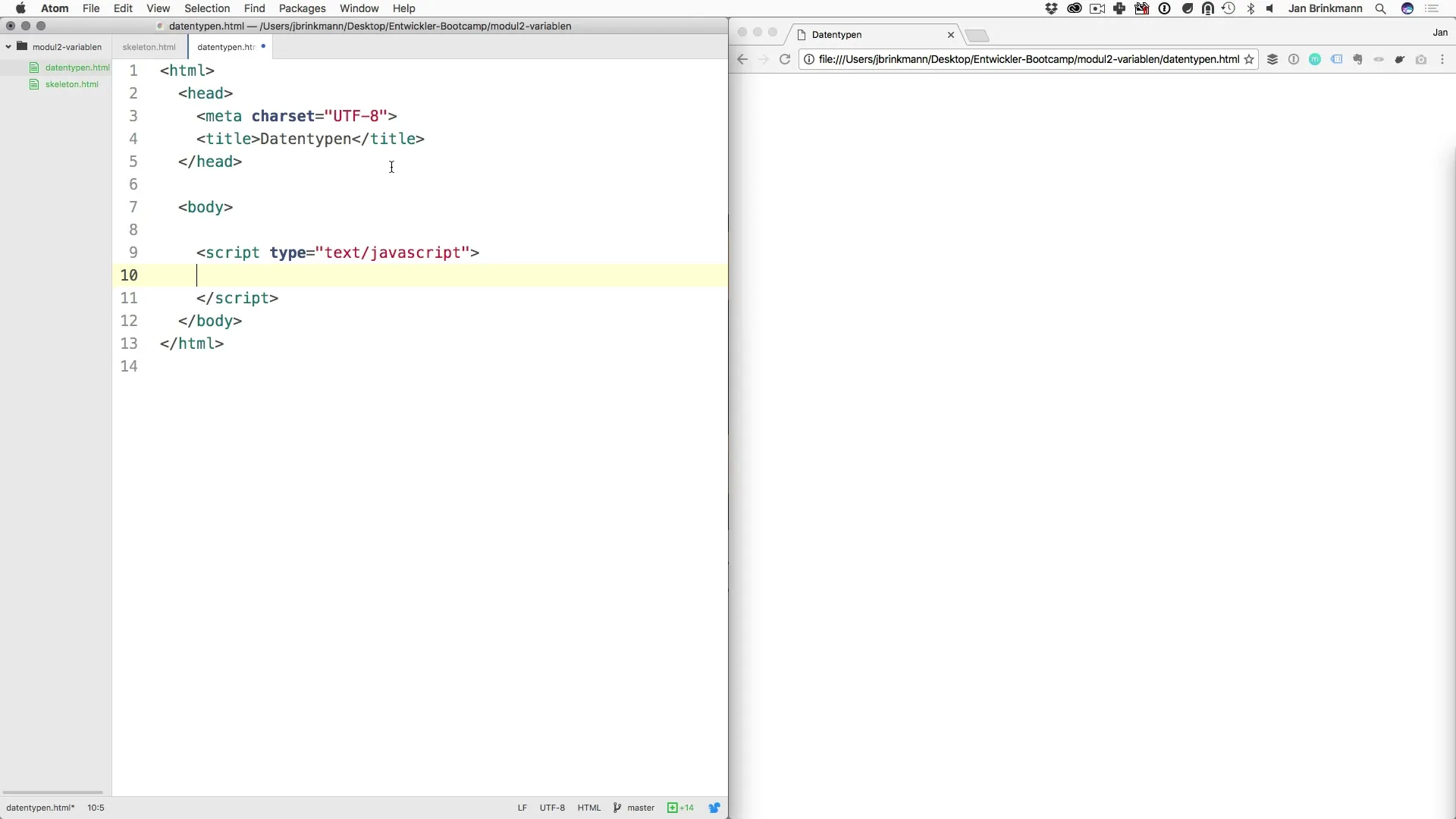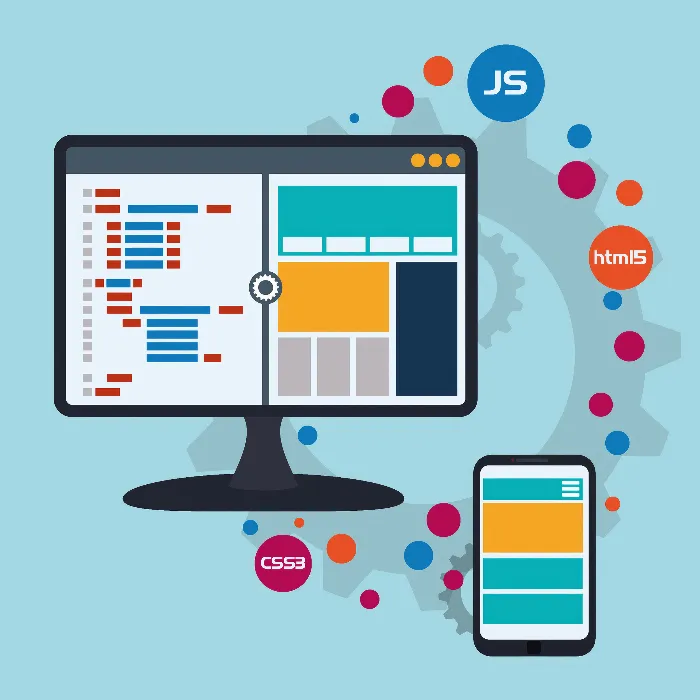If you want to program with JavaScript, it is important to understand the basic data types. They form the foundation on which you build your variables and data structures.
The video tutorial covers the different data types in JavaScript, explains why they are important, and how they differ from the typed handling in other programming languages. Let’s explore the various data types together!
Key Insights
- JavaScript uses dynamic data types, meaning that the data type of a variable can change at runtime.
- Basic data types in JavaScript are: numbers (integers and floats), strings, and booleans.
- Differences in handling data types in JavaScript compared to static typing systems in other programming languages.
Step-by-step Guide
1. Defining Variables
First, you need to understand what variables are. In JavaScript, you use variables to store data.
In this example, age is the variable and 34 is the value it stores. This is a numeric value.

2. Basic Data Type: Numbers
In JavaScript, all numbers are of a data type called number. This includes both integers and floating-point numbers.
This is a floating-point number and it is also stored in the number data type.
3. Typical Challenges with Data Types
Compared to other programming languages like Java or C++, the data type in JavaScript can vary.
JavaScript will not throw an error but simply change the data type.
4. Working with Functions and Data Types
Imagine you want to perform a calculation with your age variable that depends on an integer value. In many other programming languages, changing the data type would immediately produce a compilation error. However, in JavaScript, the error only becomes apparent when you try to operate with the aforementioned variable, potentially leading to incorrect results.
5. Strings as a Data Type
Strings are another fundamental category in JavaScript; they store text.
In this case, it is a string that consists of several characters.
6. The Role of Booleans
Another important data type is the boolean. You can define variables that are either true or false.
7. Arrays and Objects
While the above-mentioned data types are the basics, there are also more complex data structures like arrays and objects. This is where it gets interesting, as these data types allow you to store multiple values in a single variable.
8. Summary of Data Types
In this guide, you have learned the basic data types in JavaScript. You now know how to define numbers, strings, and booleans, as well as the challenges associated with dynamic data types. A fundamental understanding of these data types will help you program more effectively.
Summary – Introduction to Data Types in JavaScript
We have looked at the various data types in JavaScript, highlighting the concept of dynamic typing. It is crucial to be aware of the strengths and weaknesses of the system, especially with regard to the potential errors that can arise from inaccurate data types.
Frequently Asked Questions
What are the basic data types in JavaScript?The basic data types in JavaScript are: numbers, strings, and booleans.
Can I change the data type of a variable in JavaScript?Yes, in JavaScript it is possible to change the data type of a variable at runtime.
Are there differences between dynamic and static typing?Yes, dynamic typing allows you to change the data type at runtime, while static typing defines this at compile time.
What are arrays and objects in JavaScript?Arrays and objects are more complex data types that allow you to store multiple values in a single variable.
How can I determine what data type a variable has?In JavaScript, you can use the typeof operator to determine the data type of a variable.


